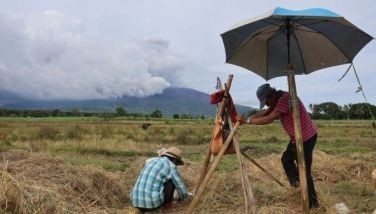Coral degradation seen in Spratlys
MANILA, Philippines - The Spratlys are rich in marine resources, but there are signs of coral degradation in these islands the Philippines calls the Kalayaan Island Group.
The area is within the jurisdiction of Kalayaan town in the far west of Palawan but is also being claimed by neighboring Asian countries.
“Pag-asa Island in particular and the Kalayaan Island Group in general have high capacity to support a fishery industry with significant importance as sources of food and economic potential for adjacent countries and the whole Southeast Asia,” stated a report titled “The Pag-asa Island (Spratlys): Challenges and Opportunities.”
Commissioned by the Kalayaan municipal government, the study aimed to provide detailed baseline information of the present state of Pag-asa Island’s resources, particularly marine, give recommendations for their sustainable use and recommend eco-tourism and livelihood activities for the island.
The 30-day survey showed that one of the island’s 10 stations had good coral cover (50.50 percent); four stations had fair coral cover (27.48 percent) while the rest had poor cover (less than 8.5 percent).
“The average condition of coral reefs in Pag-asa Island is found to be fair, though more than 50 percent of the benthic (bottom) cover in most of the stations was composed of dead corals,” the researchers said.
The researchers claim that Pag-asa Island’s low coral cover might be the result of destructive fishing methods used in the vicinity, as observed by local fishermen and island residents.
“Dead standing coral structures are a common site underwater, most likely the effect of the use of chemicals in fishing. An outbreak of crown of thorns in the reefs of Pag-asa Island further aggravated the poor situation of the corals. There were also reports of the gathering of coral boulders by foreign fishing boats from the reefs of KIG,” the report said.
Recorded in the 10 stations were 251 fish species, 141 of which are commercially valuable.
There are eight kinds of macro-invertebrates in the area: giant clams, sea cucumbers, lobsters, topshells, sipunculids, crown of thorns, sea urchins and other starfish.
All the invertebrates, except the crown of thorns, are worth conserving and protecting for food, livelihood and eco-tourism purposes.
Thus, these resources should be properly managed, the researchers said, citing the urgency of properly managing Pag-asa Island and KIG marine resources.
“Claimant countries should come to terms on how they could jointly protect and manage the area for sustainable development, before this vast coral reef resource deteriorates,” they concluded.
The study was done by researchers of Western Philippines University-College of Fisheries and Maritime Technology (WPU-CFAT) in Puerto Princesa City, Palawan, namely Benjamin Gonzales, Joel Becira, Honorio Pagliwan, Ria Sariego, Edwin Rodriguez, Bernaldo Montaño, Noli Bicron and Johanse Gonsales.
The research placed third in the recent 2009 National Aquatic Resources Research and Development System (NARRDS) award sponsored by the Los Baños-based Department of Science and Technology-Philippine Council for Aquatic and Marine Resources Research and Development (DOST-PCAMRRD).
- Latest
- Trending






























